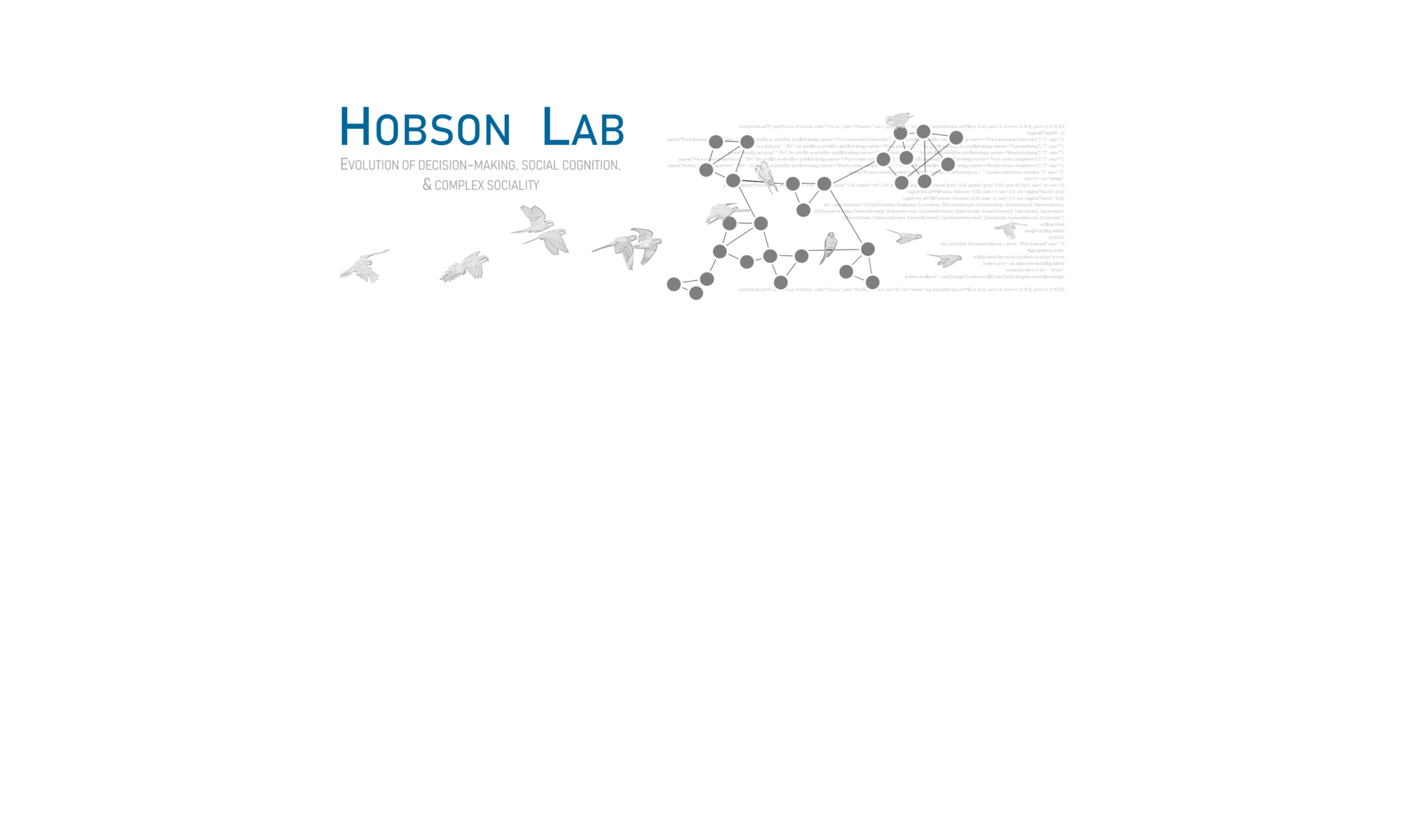Our new paper, led by Vanessa Ferdinand, was published in the theme issue “Mixed-species groups and aggregations: shaping ecological and behavioural patterns and processes” (compiled and edited by Nora V. Carlson, Todd M. Freeberg, Eben Goodale, and Anne Heloise Theo) in the Philosophical Transactions of the Royal Society B.
All our beautiful parrot art was custom-drawn by V. Darby Moore (thanks Darby!!)
This paper is especially fun for me — both Vanessa and I were “guacamayeras” for Don’s long-term data collection project and collected data in the field for several months each. Vanessa was there in 2018 and I was there in 2003.
Inferring the decision rules that drive co-foraging affiliations in wild mixed-species parrot groups
Abstract
Animals gathered around a specific location or resource may represent mixed-species aggregations or mixed-species groups. Patterns of individuals choosing to join these groups can provide insight into the information processing underlying these decisions. However, we still have little understanding of how much information these decisions are based upon. We used data on 12 parrot species to test what kind of information each species may use about others to make decisions about which mixed-species aggregations to participate in. We used co-presence and joining patterns with categorization and model fitting methods to test how these species could be making grouping decisions. Species generally used a simpler lower-category method to choose which other individuals to associate with, rather than basing these decisions on species-level information. We also found that the best-fit models for decision-making differed across the 12 species and included different kinds of information. We found that not only does this approach provide a framework to test hypotheses about why individuals join or leave mixed-species aggregations, it also provides insight into what features each parrot could have been using to make their decisions. While not exhaustive, this approach provides a novel examination of the potential features that species could use to make grouping decisions and could provide a link to the perceptive and cognitive abilities of the animals making these minute-by-minute decisions.
This article is part of the theme issue ‘Mixed-species groups and aggregations: shaping ecological and behavioural patterns and processes’.
Altmetrics





